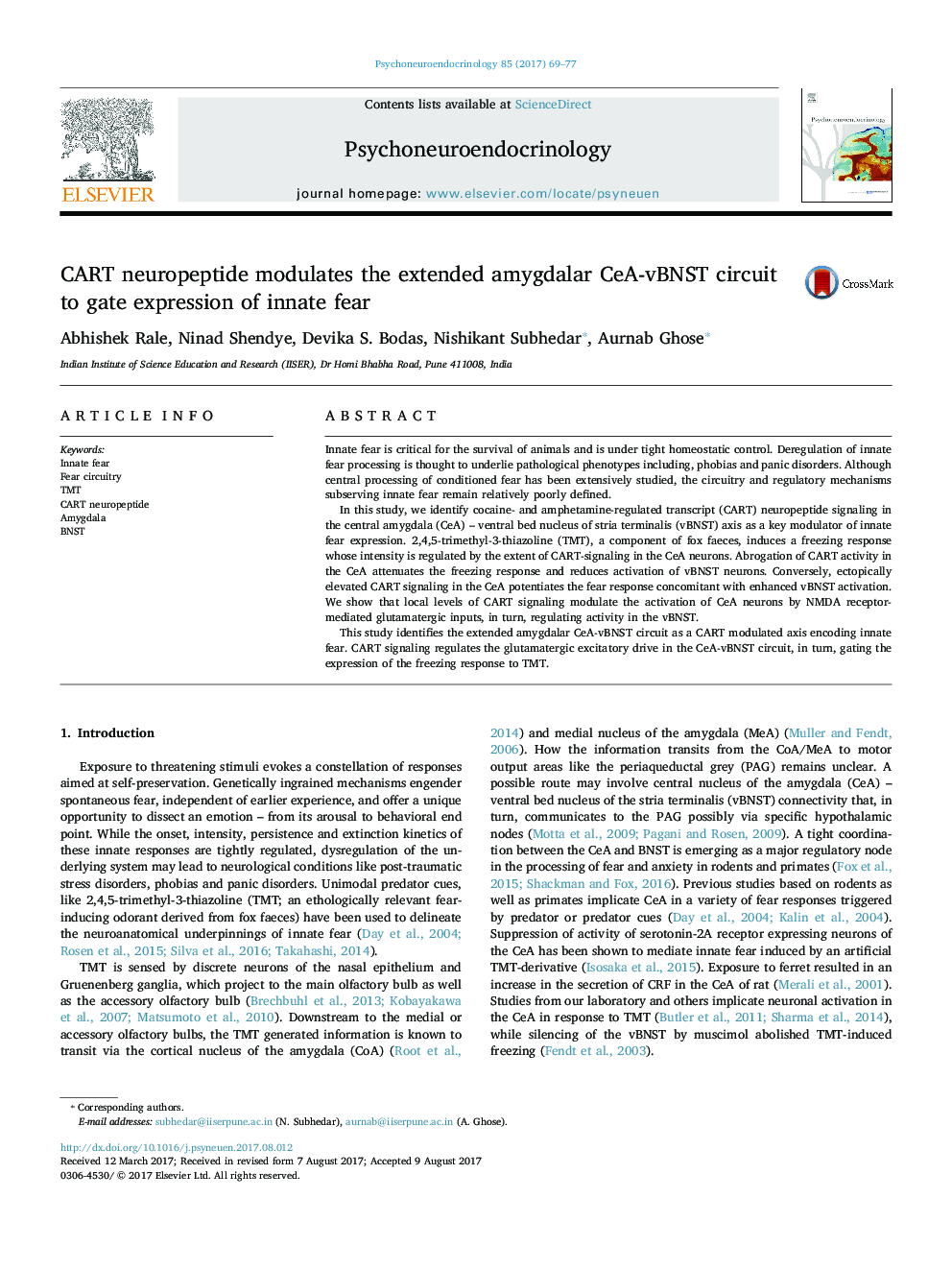| Article ID | Journal | Published Year | Pages | File Type |
|---|---|---|---|---|
| 4934185 | Psychoneuroendocrinology | 2017 | 9 Pages |
â¢The CeA mediates TMT-induced innate fear responses.â¢vBNST neurons are downstream targets of CeA activation by TMT.â¢CART peptidergic activity in the CeA modulates vBNST activation and response to TMT.â¢CART activity modulates NMDA-R signaling in CeA neurons.â¢Gating of the CeA-vBNST axis activity by CART is central to innate fear processing.
Innate fear is critical for the survival of animals and is under tight homeostatic control. Deregulation of innate fear processing is thought to underlie pathological phenotypes including, phobias and panic disorders. Although central processing of conditioned fear has been extensively studied, the circuitry and regulatory mechanisms subserving innate fear remain relatively poorly defined.In this study, we identify cocaine- and amphetamine-regulated transcript (CART) neuropeptide signaling in the central amygdala (CeA) - ventral bed nucleus of stria terminalis (vBNST) axis as a key modulator of innate fear expression. 2,4,5-trimethyl-3-thiazoline (TMT), a component of fox faeces, induces a freezing response whose intensity is regulated by the extent of CART-signaling in the CeA neurons. Abrogation of CART activity in the CeA attenuates the freezing response and reduces activation of vBNST neurons. Conversely, ectopically elevated CART signaling in the CeA potentiates the fear response concomitant with enhanced vBNST activation. We show that local levels of CART signaling modulate the activation of CeA neurons by NMDA receptor-mediated glutamatergic inputs, in turn, regulating activity in the vBNST.This study identifies the extended amygdalar CeA-vBNST circuit as a CART modulated axis encoding innate fear. CART signaling regulates the glutamatergic excitatory drive in the CeA-vBNST circuit, in turn, gating the expression of the freezing response to TMT.
